Serving 813 students in grades Prekindergarten-5, P.s. 69 Jackson Heights ranks in the top 30% of all schools in New York for overall test scores (math proficiency is top 50%, and reading proficiency is top 50%).
The percentage of students achieving proficiency in math is 54% (which is higher than the New York state average of 46%). The percentage of students achieving proficiency in reading/language arts is 62% (which is higher than the New York state average of 49%).
The student:teacher ratio of 17:1 is higher than the New York state level of 11:1.
Minority enrollment is 93% of the student body (majority Asian), which is higher than the New York state average of 60% (majority Hispanic and Black).
Quick Stats (2025)
- School Type: Magnet School
- Grades: Prekindergarten-5
- Enrollment: 813 students
- Student:Teacher Ratio: 17:1
- Minority Enrollment: 93%
- Overall Testing Rank: Top 30% in NY
- Math Proficiency: 54% (Top 50%)
- Reading Proficiency: 62% (Top 30%)
- Science Proficiency: 85-89% (Top 50%)
- Source: National Center for Education Statistics (NCES), NY Dept. of Education
School Overview
P.s. 69 Jackson Heights's student population of 813 students has declined by 19% over five school years.
The teacher population of 48 teachers has declined by 15% over five school years.
School Type
Grades Offered
Grades Prekindergarten-5
(offers virtual instruction)
(offers virtual instruction)
Total Students
813 students
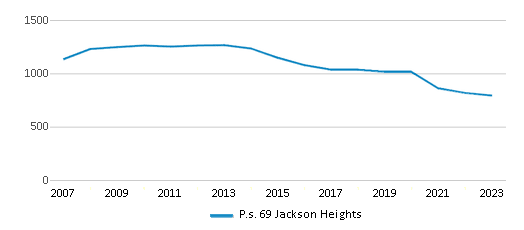
Gender %
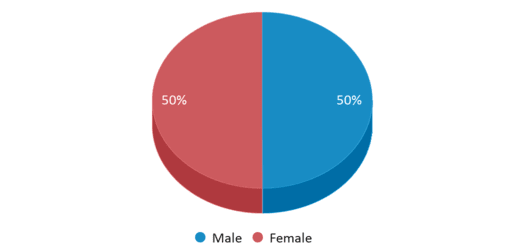
Total Classroom Teachers
48 teachers

Students by Grade
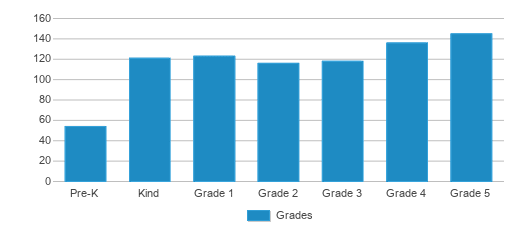
School Rankings
P.s. 69 Jackson Heights ranks within the top 30% of all 4,377 schools in New York (based off of combined math and reading proficiency testing data).
The diversity score of P.s. 69 Jackson Heights is 0.61, which is less than the diversity score at state average of 0.72. The school's diversity has stayed relatively flat over five school years.
Overall Testing Rank
#1311 out of 4377 schools
(Top 30%)
(Top 30%)
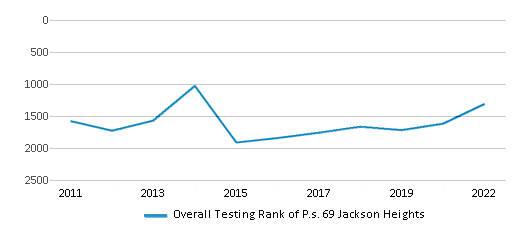
Math Test Scores (% Proficient)
54%
46%

Reading/Language Arts Test Scores (% Proficient)
62%
49%
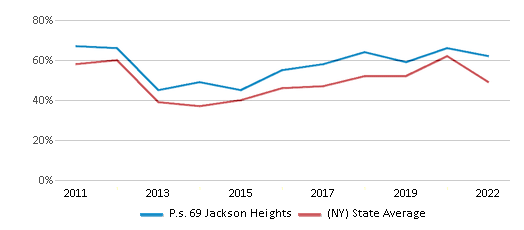
Science Test Scores (% Proficient)
85-89%
78%
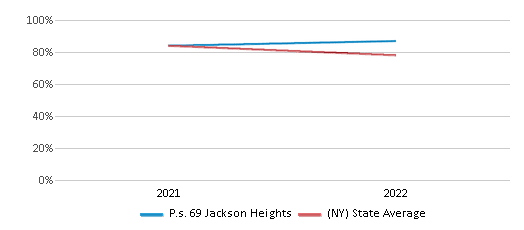
Student : Teacher Ratio
17:1
11:1
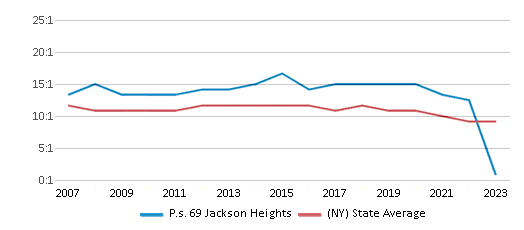
American Indian
1%
1%
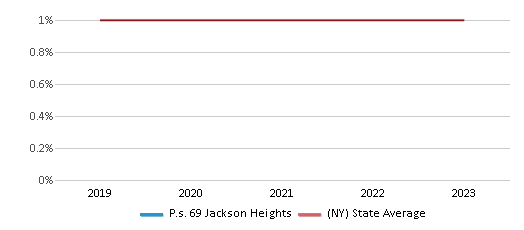
Asian
50%
10%
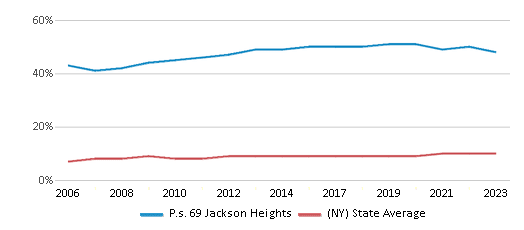
Hispanic
38%
30%
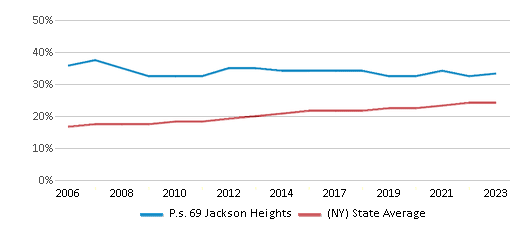
Black
1%
16%
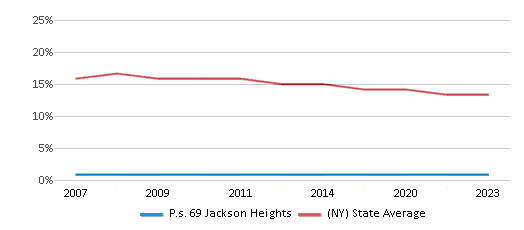
White
7%
40%
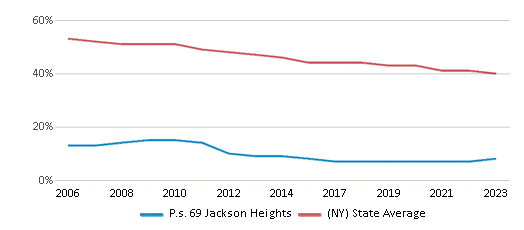
Hawaiian
n/a
n/a
Two or more races
3%
3%
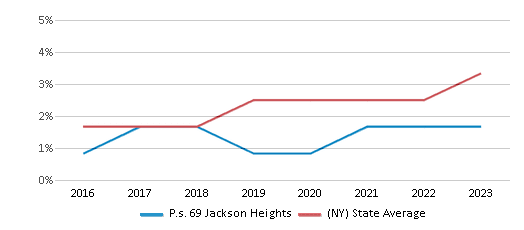
All Ethnic Groups
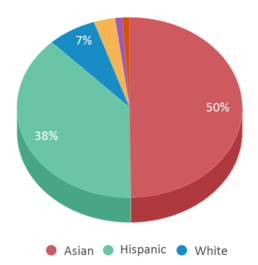
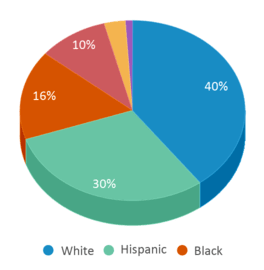
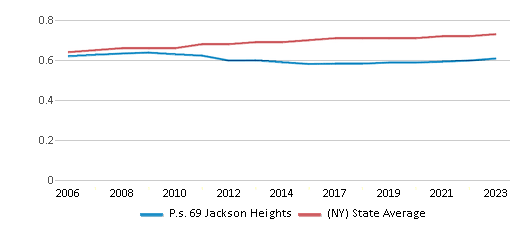
Participates in the National School Lunch Program (NSLP)
Yes
Eligible for Free Lunch
69%
54%
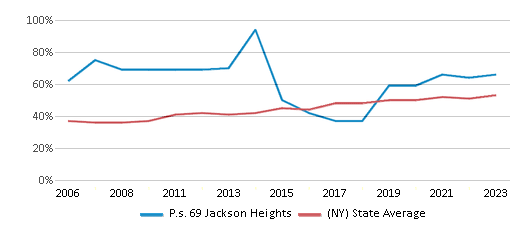
Eligible for Reduced Lunch
2%
3%
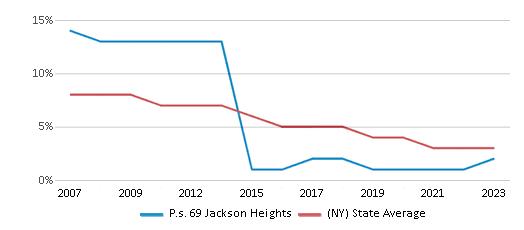
School Statewide Testing
School District Name
Source: National Center for Education Statistics (NCES), NY Dept. of Education
Profile last updated: 02/09/2025
Frequently Asked Questions
What is P.s. 69 Jackson Heights's ranking?
P.s. 69 Jackson Heights is ranked #1311 out of 4,377 schools, which ranks it among the top 30% of public schools in New York.
What schools are P.s. 69 Jackson Heights often compared to?
P.s. 69 Jackson Heightsis often viewed alongside schools like P.s. 212 by visitors of our site.
What percent of students have achieved state testing proficiency in math and reading?
54% of students have achieved math proficiency (compared to the 46% NY state average), while 62% of students have achieved reading proficiency (compared to the 49% NY state average).
How many students attend P.s. 69 Jackson Heights?
813 students attend P.s. 69 Jackson Heights.
What is the racial composition of the student body?
50% of P.s. 69 Jackson Heights students are Asian, 38% of students are Hispanic, 7% of students are White, 3% of students are Two or more races, 1% of students are American Indian, and 1% of students are Black.
What is the student:teacher ratio of P.s. 69 Jackson Heights?
P.s. 69 Jackson Heights has a student ration of 17:1, which is higher than the New York state average of 11:1.
What grades does P.s. 69 Jackson Heights offer ?
P.s. 69 Jackson Heights offers enrollment in grades Prekindergarten-5 (offers virtual instruction).
What school district is P.s. 69 Jackson Heights part of?
P.s. 69 Jackson Heights is part of New York City Geographic District #30 School District.
School Reviews
5 12/11/2012
Our son is now in the fifth grade having been a student at PS69Q since kindergarten. In general we have been very pleased with his growth and experiences at this school. We are especially appreciative of the musical extracurricular opportunities offered here. Our son is now in his second year of cello and is singing in the chorus and will also be learning the bass in the spring. These activities have really given him a chance to grow and express himself in ways that he otherwise would not have the chance. They have been very instrumental in allowing him be more confident and secure. We also appreciate the breadth of diversity in the student body. The faculty has been very responsive to helping him strengthen areas where he may have been weak and well as helping him build on his strengths.
2 9/8/2009
School staff ignores the IEPs of special needs students.
Review P.s. 69 Jackson Heights. Reviews should be a few sentences in length. Please include any comments on:
- Quality of academic programs, teachers, and facilities
- Availability of music, art, sports and other extracurricular activities
Recent Articles

What Is A Charter School?
Explore the world of charter schools in this comprehensive guide. Learn about their history, how they operate, and the pros and cons of this educational innovation. Discover key facts about charter schools, including admission policies, demographics, and funding, as well as what to look for when considering a charter school for your child.

10 Reasons Why High School Sports Benefit Students
Discover the 10 compelling reasons why high school sports are beneficial for students. This comprehensive article explores how athletics enhance academic performance, foster personal growth, and develop crucial life skills. From improved fitness and time management to leadership development and community representation, learn why participating in high school sports can be a game-changer for students' overall success and well-being.

February 05, 2025
Understanding the U.S. Department of Education: Structure, Impact, and EvolutionWe explore how the Department of Education shapes American education, from its cabinet-level leadership to its impact on millions of students, written for general audiences seeking clarity on this vital institution.






